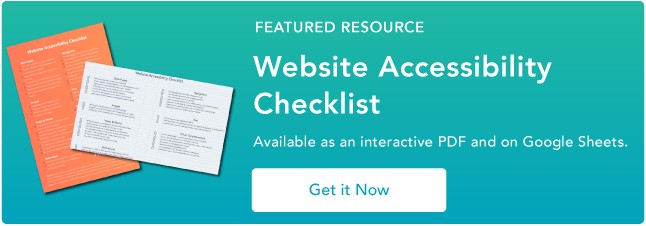Welcome to Creator Columns, where we bring expert HubSpot Creator voices to the Blogs that inspire and help you grow better.
This piece is in collaboration with Breaking the Blueprint, a blog series that dives into the unique business challenges and opportunities of underrepresented business owners and entrepreneurs.
I’ve been an inclusive marketing strategist and consultant for the last seven years. I’m also a consumer with several identities that are part of underrepresented and underserved communities.
And I can’t tell you the number of times I’ve been on brand websites and social channels exploring whether or not I should buy something, only to decide "this brand isn’t for me" based upon something I saw or didn’t see.
Once, I was sitting with my credit card in hand while clicking through to a brand’s Instagram account from a sponsored post, only to quickly put my card away because I didn’t see anyone in the imagery that looked like me.
Unfortunately, experiences like that aren’t unique to me.
Most brands don’t know how much they could improve their conversions by optimizing their website and social media to also work for consumers from underrepresented and underserved communities.
Conducting a website and social media audit can highlight opportunities to deliver better experiences for all the customers you want to serve while improving your conversions.
The Starting Point for An Inclusive Marketing Audit
Get clear about the customers you want to serve.
Over the years, as I’ve chatted with and trained marketers about inclusive marketing, one thing that has popped up repeatedly is the notion of feeling like you have to serve everyone.
However, that’s a myth.
Inclusive marketing isn’t about serving everyone. While that would be fantastic, most brands lack the resources to do so effectively.
Inclusive marketing starts with acknowledging the many ways consumers are different and intentionally choosing which identities of your ideal customers you want to feel like they belong with your brand.
In this episode of the Inclusion & Marketing podcast, I discussed the concept of not feeling obligated to serve everyone in great detail.
You should only assess the experiences you deliver for the specific audiences you’ve decided to reach.
But herein lies the crux of the issue. One of the most common areas where brands get thrown off with their inclusive marketing efforts is by not having a sufficient degree of specificity regarding the ideal customer they are trying to reach.
So, if you’ve defined your audience as "working moms with an active lifestyle," it's essential to be precise. Does that include:
- Asian moms
- Single moms
- Muslim moms
- Moms with disabilities
- Queer moms
- Moms with kinky hair
- Older moms
If you haven’t been clear about the specific identities you want to include, it becomes very easy to exclude moms from underrepresented and underserved communities from your planning for various elements of your marketing.
As a result, your ideal consumers from these groups won’t convert to customers if they feel you haven’t considered them with the products, services, and experiences you deliver on your website and social channels.
Where To Focus Your Inclusive Website & Social Media Audits
There are plenty of areas throughout your brand's customer experience that you can evaluate through an inclusive lens. Focus on these core areas as a starting point to improve your conversions.
1. Representation
Representation matters. We know this. One research study I conducted showed that 74% of consumers say representation in marketing is important to them. That same study showed that three out of four consumers say they buy from and engage with brands that have adequately represented them.
When I educate on this topic, I like to remind marketers that people need to see themselves and who they aspire to be reflected in their brand's visual imagery.
Seeing themselves represented is like a permission slip to take the next step forward with you, which increases your conversions. When they don’t see themselves, it causes unnecessary friction that often causes them to disengage with a brand.
When I’m conducting inclusive website and social media audits, representation is one of the key areas where many brands fall short.
I landed on Audible’s Instagram account recently due to some influencer promos they did, and I was super impressed with the representation. The nature of their product offering naturally speaks to a broad diversity of people. When you look at the brand’s grid, the people featured reflect a range of identities.
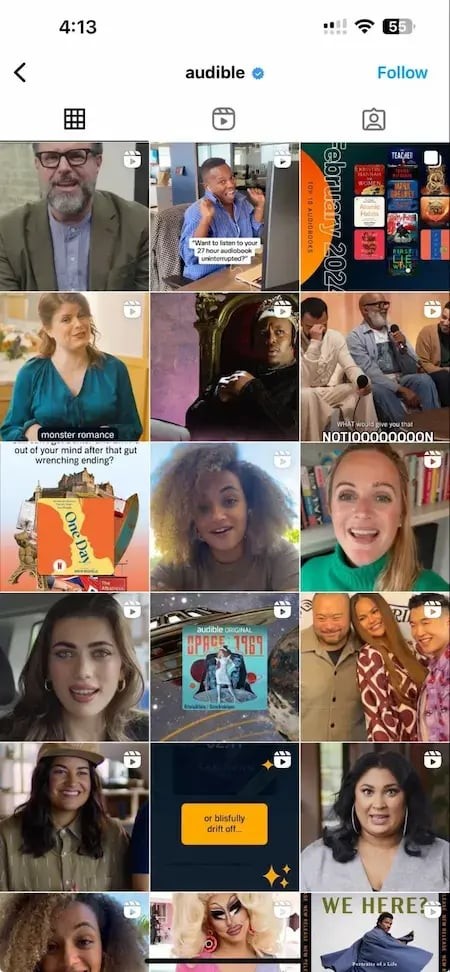
Audible even found a way to represent different identities in their Instagram Stories.
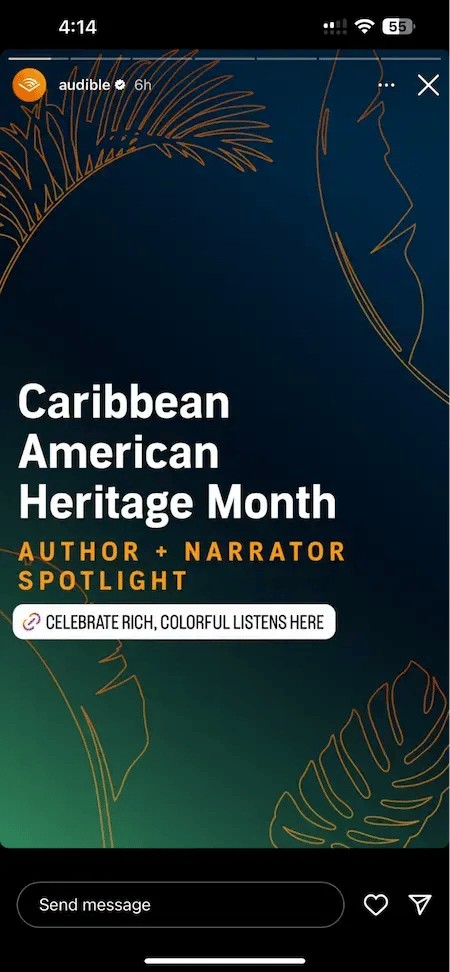
Here are some critical areas to evaluate to ensure you have adequate representation of the people you’ve chosen to serve on your website and social media:
- Customer testimonials
- Featured experts
- Your team
- Influencers
- Power dynamics
- Photography (both custom and stock)
This video explains more in detail what you need to be on the lookout for with power dynamics.
In this episode of the Inclusion & Marketing podcast, I covered key considerations when searching for inclusive stock photography.
2. Accessibility
I’ve included accessibility on this list as something to check — whether or not your brand has intentionally chosen to serve people with disabilities.
Some government entities have mandated certain accessibility requirements for brands on their websites. One case in the U.S. landed on the Supreme Court's desk after a visually impaired man tried to order a pizza on Domino’s website and app but couldn’t because they weren’t compatible with screen readers.
Ultimately, the courts ruled Domino’s needed to make its website accessible.
Inclusive marketing drives business results, and there are plenty of great reasons to represent people with disabilities in your marketing (besides mandates).
The good news is that there are plenty of resources, including HubSpot’s website accessibility checklist, to help you ensure your website is accessible.
When it comes to social media, here are a few things to check from an accessibility perspective:
- Captions on videos
- Alt text usage
- Use Camel Case or Pascal Case in your hashtags
- Image descriptions
- Usage of emojis
I’m super thankful someone on LinkedIn slid into my DMs to educate me on my inaccessible use of hashtags. Once I learned how to do it correctly, I made this quick video to share the knowledge with others.
3. Brand Values
Many research studies reveal that consumers want to buy from brands that share or reflect their values. The HubSpot Consumer Trends Study showed that 82% of consumers feel this way.
Since consumers increasingly care about brand values, it is more important than ever for brands to evaluate how well they are doing at both communicating and living their values.
Many brands struggle with this. A while back, I audited several websites for eCommerce brands, and my feedback for all of them was that they needed to find a way to highlight their values.
While most brands don’t mention their values on their websites or social media, I’ve also found that the small percentage of brands that do often have them buried somewhere in the footer or under some vague name, making them difficult for consumers to find.
Both ice cream maker Ben & Jerry’s and retailer Patagonia do a stellar job of communicating their values on their website and social media channels.
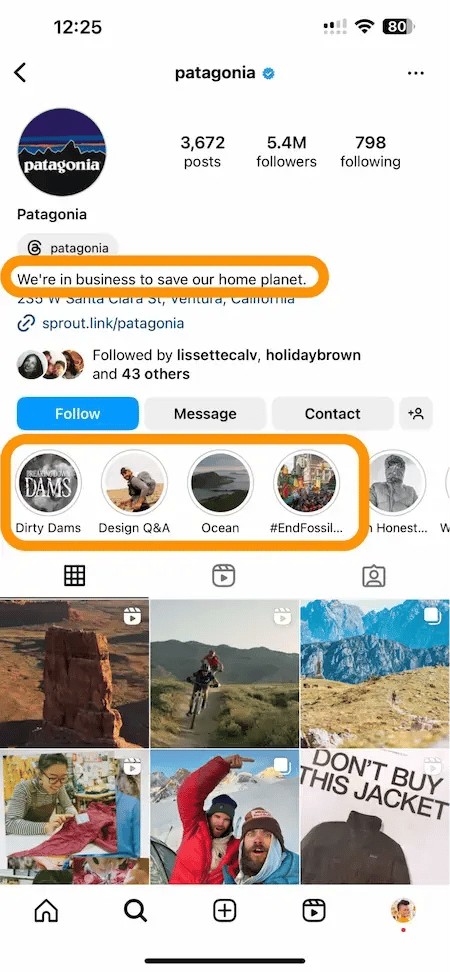
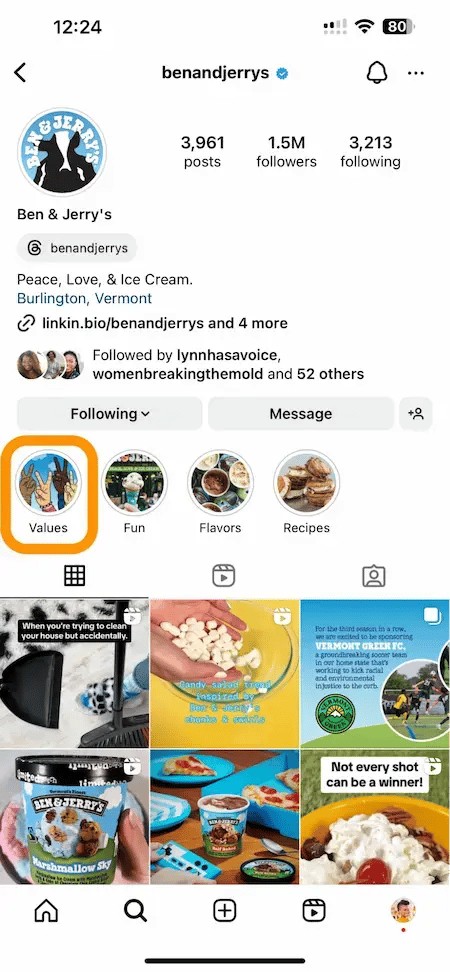
Ben & Jerry’s brand values are also featured prominently on its website.
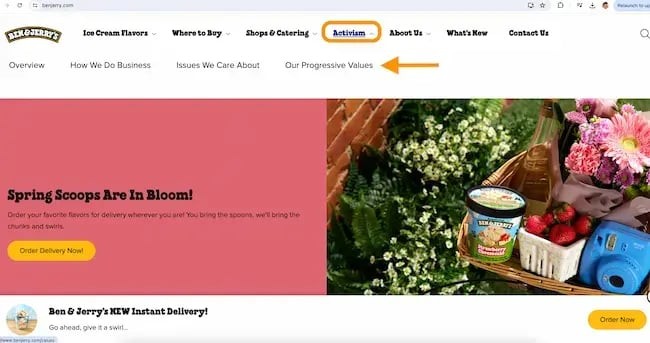
As you’re doing your inclusive marketing audits, review these key areas related to your values:
- Communication on website and social media
- Ease of finding values-based content
- Examples of living your brand values integrated into your content
4. Language
The words we use matter.
That’s why, in 2021, Unilever decided to remove the word "normal" from packaging and advertisements for its personal care products. After conducting a global study of more than 10,000 people, they found that 7 out of 10 people felt the word had a negative impact on consumers.
It is important to take great care with the words you use to ensure they draw the people you want to serve closer to you rather than pushing them away.
When auditing your website and social media, I recommend evaluating the words you’re using for:
- Appropriation
- Harmful meaning and connotation
- The reach, context, and meaning of pop culture references
- Gendered language
- Ableist language
- Stereotypes
This video explains more of the details about what to be on the lookout for with pop culture references.
This episode of the Inclusion & Marketing podcast discusses how to ensure that the language you use in your brand’s messaging is inclusive.
It’s Time To Improve Your Conversions
When working towards a goal, it's useful to assess how you’re performing today so you can identify areas of opportunity to improve your results.
It’s no different when marketing to an increasingly diverse customer base.
Evaluate how the customer experience you’re currently delivering on your website and social media channels measures up to attract and convert more of the customers you want to serve.
As you start implementing changes that make more of the people you want to serve feel like they belong with your brand, you’ll be poised to increase your conversions.

